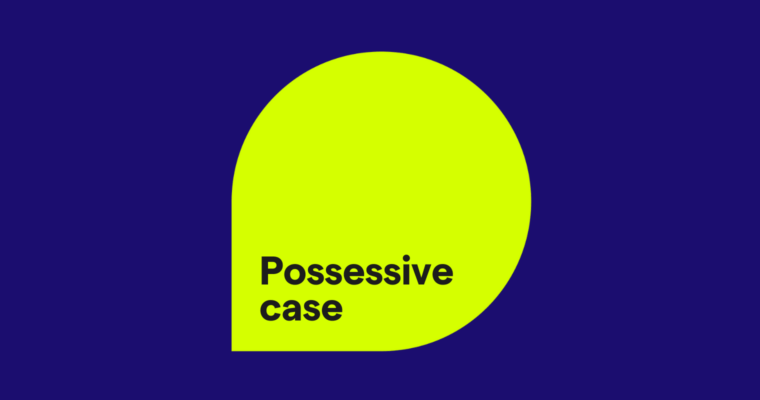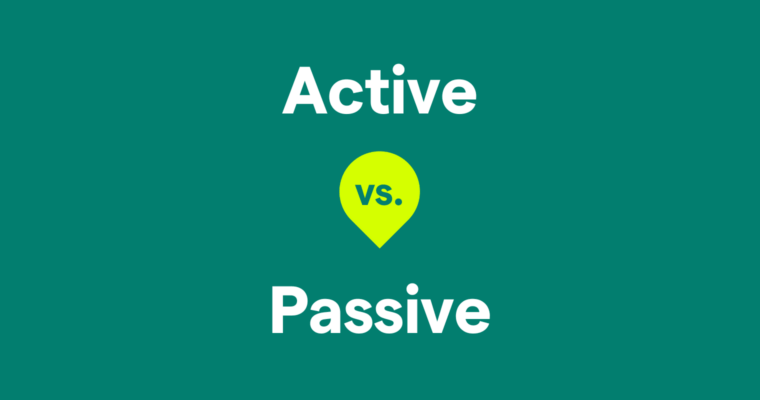
- The possessive case shows the relationship of a noun to other words in a sentence.
- Possessive case shows ownership, possession, occupancy, a personal relationship, or another association.
- With the addition of –’s (or sometimes just the apostrophe), a noun can change from a simple person, place, or thing to a person, place, or thing with a relationship to something else.
- Possessive cases can be used for singular, plural, multiple, and compound nouns.
- There is not one set rule about whether nouns naming inanimate objects can become possessive—the opinions of experts on grammar and style vary on this subject, and writers can choose which to follow.
The possessive case is the grammatical category that communicates nouns’ relationships to each other. Other grammatical cases include the nominative and accusative case. While nouns in the nominative case are the “doers” of the action in their sentences and nouns in the accusative case are being acted upon by other nouns, nouns in the possessive case have possession of other nouns.
If this sounds confusing, don’t worry—we’ll make the possessive case easy to understand. Read on to learn more about the possessive case of nouns through lots of possessive case examples.
Table of contents
Possessive case of singular nouns
Possessive case of plural nouns/a>
Possessive case for multiple nouns
Possessive case for compound nouns
Possessive pronouns vs. possessive nouns
Possessives with inanimate nouns
Possessive vs. attributive nouns
What is the possessive case?
As mentioned above, the possessive case is the grammatical case that shows ownership. Grammatical cases communicate nouns’ roles within sentences. When a noun is in the possessive case, the reader understands how it relates to another person, place, thing, idea, or quality mentioned in the sentence. Take a look at the examples of the possessive case below, where the noun in the possessive case is bolded.
Possessive case examples
- Sarah’s car
- We loved the restaurant’s ambiance.
- Michael is Aaron and Stella’s grandson.
- My dog’s hair gets all over the house!
Possessive case of singular nouns
For most singular nouns, both common and proper, the possessive case is formed by adding ’s to the end of the word.
- That tree’s colors are particularly vibrant this fall.
- Sampreeth’s favorite video game
- We all went to Andre’s house.
This rule usually applies to names that end in s or z:
- Paz’s new career is in the healthcare field.
However, it’s important to keep in mind that some style guides, such as AP, instead require that names ending in s or z only get an apostrophe after the final letter, like so:
- Every year, Chris’ Halloween party is a ton of fun!
If you’re not sure whether you should make a singular noun possessive with an ’s or simply an apostrophe, consult your style guide. Or, if you’re not working with a style guide, you’re free to choose either. Just make sure you stick with your choice throughout the document, as inconsistent case designations can confuse readers.
Possessive case of plural nouns
To create the possessive case of plural nouns that end in s, simply add an apostrophe to the end of the word. Here are a few examples:
- My sister works at the Antonellis’ restaurant.
- That’s the cows’ barn.
However, not all plural nouns end in s. For these nouns, add an ’s at the end to create the possessive case:
- The women’s restroom is currently being renovated.
- Our kids used to sing in the children’s choir.
Possessive case for multiple nouns
What about situations where two or more singular nouns share possession of something? In cases like this, only the last noun in the list is put into the possessive case. Take a look at these examples:
- Chris and Perry’s boat is named “Mermaid Daze.”
- When I needed help with calculus, I read Professor Markowitz and Professor Giordano’s study guide.
But what if you want to talk about separate things that two or more nouns possess? In other words, what if you need to discuss two separate study guides: Professor Markowitz’s study guide and Professor Giordano’s study guide?
In this scenario, both nouns are put into the possessive case. Here’s an example:
- Kieran’s and Elena’s mothers are doctors.
Putting both nouns into the possessive case makes it clear that they have two separate mothers. For comparison, if we wrote this sentence as Kieran and Elena’s mothers are doctors, the reader would assume that Kieran and Elena are siblings.
Possessive case for compound nouns
Compound nouns are nouns that are composed of two or more words. A few examples include:
- Laundry detergent
- Sunset
- Father-in-law
With compound nouns, follow the same possessive case rules as single-word singular and plural nouns.
- My brother-in-law’s favorite ice cream flavor is cookie dough.
- The desk chair’s wheel needs to be oiled.
- My sister-in-laws’ small business has really taken off!
- Island sunsets’ beauty is unmatched.
Just like putting multiple regular nouns into the possessive case, only change the last one to the possessive case when you’ve got multiple compound nouns.
- Laundry detergent, iced tea, and banana pudding’s prices all increased this year.
Possessive pronouns vs. possessive nouns
Pronouns are used in place of nouns to prevent a piece of writing or speech from becoming redundant. For example, you might say: Daria will be late to class today; she said the bus is delayed. In the second clause of this sentence, we used she instead of Daria because we already know who the sentence is about.
Pronouns can be used in the possessive case too. They change form altogether, into possessive pronouns, to reflect a relationship, rather than adding ’s like possessive nouns do. Possessive pronouns include:
- Her/hers
- His
- Their/theirs
- Our/ours
- My/mine
- Your/yours
- Its
Here are a few quick examples of possessive pronouns in sentences:
- The pond on their property is full of fish and frogs.
- My siblings and I bought our parents a new TV for their anniversary.
The above examples show possessive pronouns acting as determiners before nouns, just as possessive nouns do. Unlike possessive nouns, however, possessive pronouns don’t always have to go directly before the object of possession. Each determiner possessive form of a pronoun has a corresponding independent possessive form that can stand alone. Take a look at these examples:
- If you want them, the books are yours.
- He’s been a good friend of mine for 15 years.
Not sure you’re using possessive pronouns and possessive nouns properly? Grammarly can help you write with confidence.
Possessives with inanimate nouns
When it comes to inanimate nouns—nouns that name things like buildings, household objects, furniture, and anything else nonliving—there are a range of views held by usage authorities about whether it is correct to use them in the possessive.
The most conservative perspective on this question is that the possessive can be used only for people, and any other kind of noun must show its relationship to the rest of a sentence without the help of ’s. Here are some examples that follow this strict rule:
- The manufacturer of these cars is based in Tennessee.
- My grandmother’s house is made of wood.
However, most style guides and experts today allow for many inanimate nouns taking ’s, though they may suggest different ways of determining which nouns those are. Because there is no definitive, agreed-upon rule, it generally makes sense for writers to apply their common sense and ear for language. If a sentence sounds awkward with the possessive form, rewrite it using a prepositional phrase instead.
The formula for this is [possessed object] + of the + [inanimate noun]. Here are a couple of examples of sentences that may sound more natural with a prepositional phrase to show the relationship of an inanimate noun to another element of a sentence than with a possessive:
- We set up our tents at the foot of the mountain. [Not “the mountain’s foot.”]
- I need to have the frames of my glasses repaired. [Not “my glasses’ frames.”]
You can also use an attributive noun in place of the possessive case for an inanimate noun, which we cover in the next section.
Possessive vs. attributive nouns
Another way to show the relationship between an inanimate noun and another noun is to use the inanimate noun as an attributive noun. An attributive noun temporarily behaves like an adjective, appearing before and modifying another noun, as in these examples:
- The housekeeper cleaned the hotel room.
- I escorted them to the office lobby.
- My favorite food is soup dumplings.
Possessive case of nouns FAQs
What is the possessive case?
The possessive case is the grammatical case that shows a noun’s relationship to something it owns or one of its characteristics.
How do you create the possessive case of plural nouns?
If a plural noun ends in s, the possessive case adds an apostrophe after the s. If the noun does not end in s, like people, add an ’s to the end of the word to make it possessive.
How do you create the possessive case of singular nouns?
For singular nouns that don’t end in s or z, add an ’s to the end of the word to make it possessive. For singular nouns that do end in s or z, simply add an apostrophe to the end.






